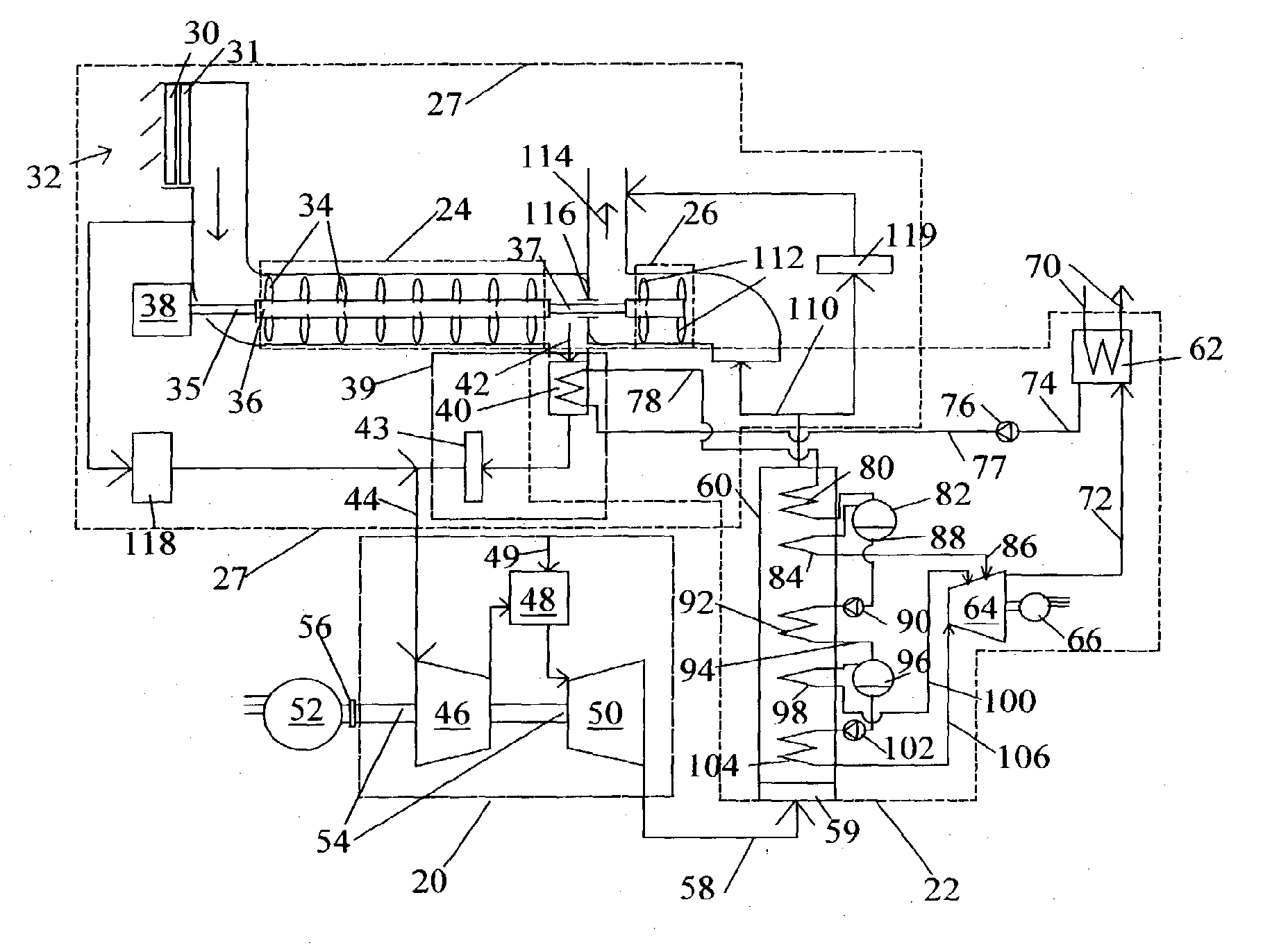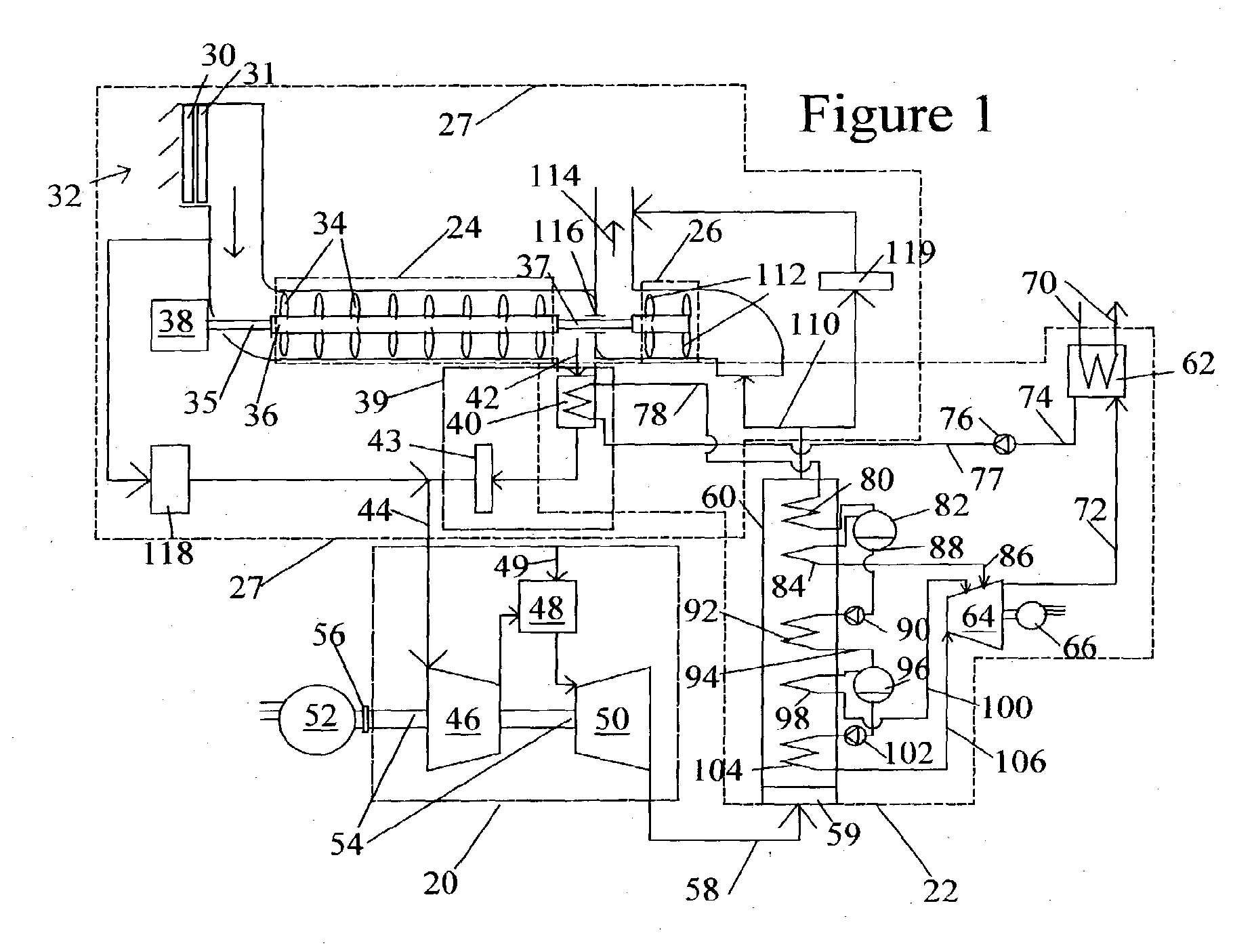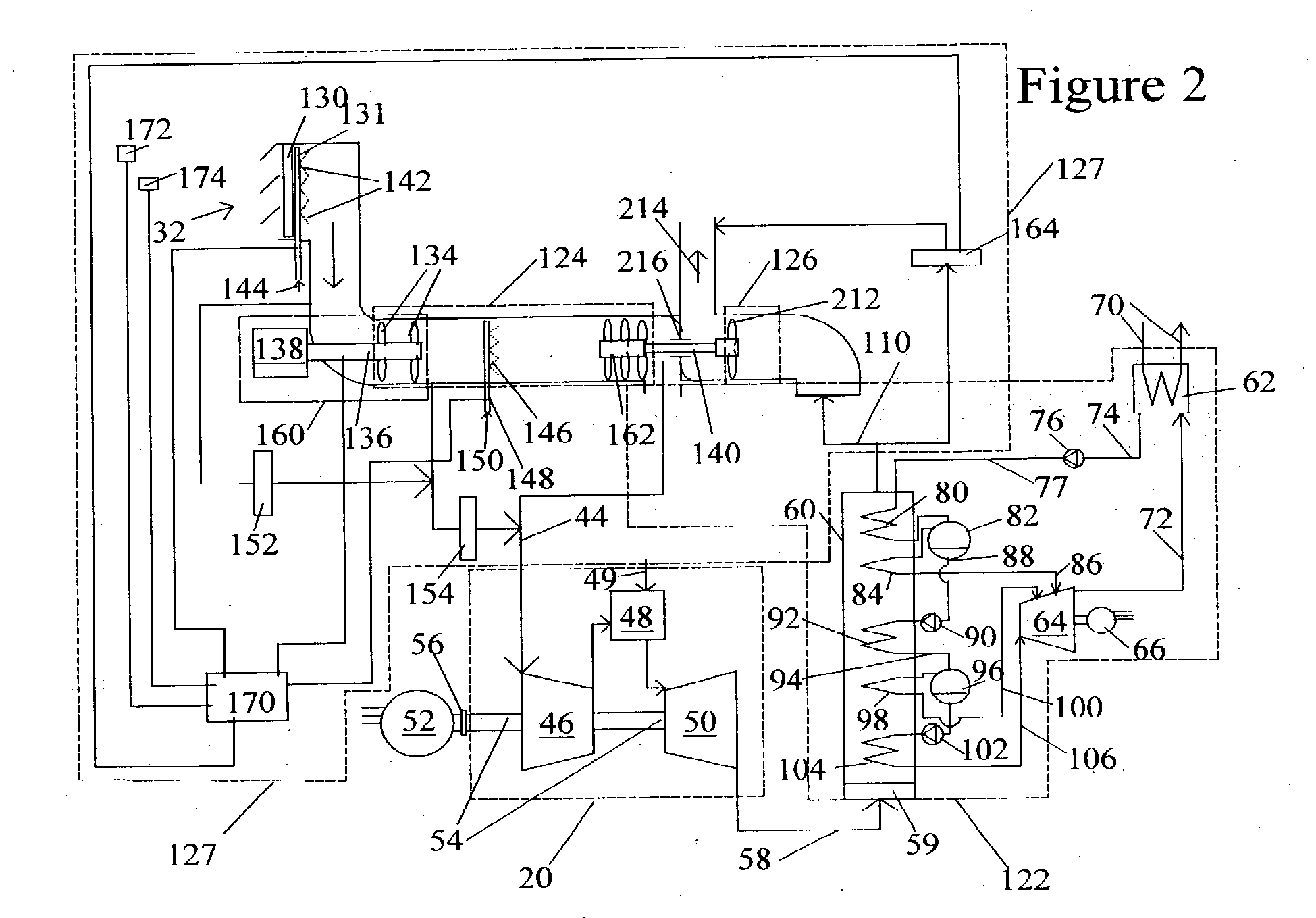Highly Supercharged Gas Turbine Generating System
a gas turbine generator and supercharger technology, applied in the direction of machines/engines, mechanical equipment, engine starters, etc., can solve the problems of low system capacity, reduced power capacity general decrease of generators and transformers, so as to improve the cooling of electric generators and transformers, the effect of high air velocity
- Summary
- Abstract
- Description
- Claims
- Application Information
AI Technical Summary
Benefits of technology
Problems solved by technology
Method used
Image
Examples
embodiment
[0140]Alternate Retrofit Embodiment
[0141]FIG. 7 shows an alternate embodiment of FIG. 6. This embodiment eliminates cooling after a precompressor 688. The precompressor comprises multiple single-stage fans arranged in series. Fans 640, 650, 660, 670, and 680 comprise impellers 642, 652, 662, 672, and 682 that are driven by motors 644, 654, 664, 674, and 684 respectively. The fans are preferably variable-pitch axial fans. Since no cooler is located downstream of the fans, there is no problem with potential liquid carryover into the turbine. If water is unavailable, the evaporative cooler 626 may be eliminated without changing the basic principle of operation of the system.
[0142]A controller 699 operates the fans to maximize output of the gas-turbine power plant. A power transducer 638 in communication with the controller senses generator power output. A temperature sensor 690 and a pressure sensor 692 allow the controller 699 to sense the discharge pressure and temperature leaving th...
PUM
 Login to View More
Login to View More Abstract
Description
Claims
Application Information
 Login to View More
Login to View More - R&D
- Intellectual Property
- Life Sciences
- Materials
- Tech Scout
- Unparalleled Data Quality
- Higher Quality Content
- 60% Fewer Hallucinations
Browse by: Latest US Patents, China's latest patents, Technical Efficacy Thesaurus, Application Domain, Technology Topic, Popular Technical Reports.
© 2025 PatSnap. All rights reserved.Legal|Privacy policy|Modern Slavery Act Transparency Statement|Sitemap|About US| Contact US: help@patsnap.com



